_____________________________________JUNETEENTH
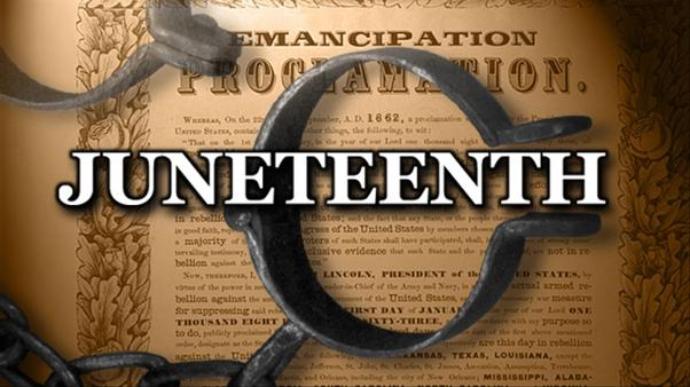
DALE RICARDO SHIELDS
Juneteenth is the oldest known celebration commemorating the ending of slavery in the United States. Dating back to 1865, it was on June 19th that the Union soldiers, led by Major General Gordon Granger, landed at Galveston, Texas with news that the war had ended and that the enslaved were now free. Note that this was two and a half years after President Lincoln’s Emancipation Proclamation – which had become official January 1, 1863.
The Emancipation Proclamation had little impact on the Texans due to the minimal number of Union troops to enforce the new Executive Order. However, with the surrender of General Lee in April of 1865, and the arrival of General Granger’s regiment, the forces were finally strong enough to influence and overcome the resistance. Later attempts to explain this two and a half year delay in the receipt of this important news have yielded several versions that have been handed down through the years. Often told is the story of a messenger who was murdered on his way to Texas with the news of freedom.
Another is that the news was deliberately withheld by the enslavers to maintain the labor force on the plantations. And still, another, is that federal troops actually waited for the slave owners to reap the benefits of one last cotton harvest before going to Texas to enforce the Emancipation Proclamation. All of which or neither of these versions could be true. Certainly, for some, President Lincoln’s authority over the rebellious states was in question For whatever the reasons, conditions in Texas remained status quo well beyond what was statutory.
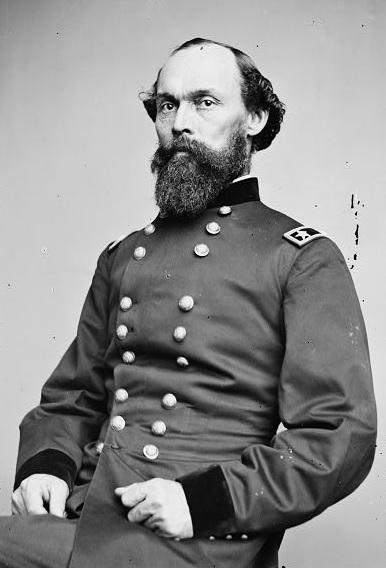
Union General Gordon Granger arrived in Galveston and issued General Order Number 3, which read, “The people of Texas are informed that, in accordance with a proclamation from the Executive of the United States, all slaves are free. This involves an absolute equality of personal rights and rights of property between former masters and slaves, and the connection heretofore existing between them becomes that between employer and hired labor. The freed are advised to remain at their present homes and work for wages. They are informed that they will not be allowed to collect at military posts; and that they will not be supported in idleness either there or elsewhere.” The tidings of freedom reached approximately 250,000 slaves in Texas gradually as individual plantation owners informed their slaves over the months following the end of the war. The news elicited an array of personal celebrations, some of which have been described in The Slave Narratives of Texas (1974).
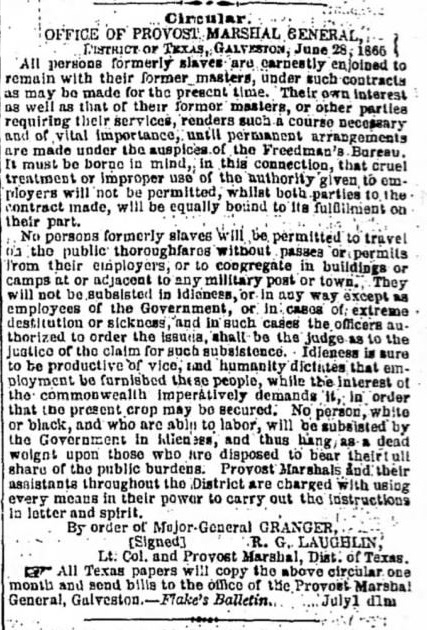
Gordon Granger’s Circular. Courtesy of the Galveston Daily News, July 7, 1865.
Juneteenth, also known as Juneteenth Independence Day or Freedom Day, is an American holiday that commemorates the June 19, 1865, announcement of the abolition of slavery in the U.S. state of Texas, and more generally the emancipation of enslaved African Americans throughout the former Confederate States of America.
Significance: Emancipation of the last remaining enslaved people in the United States
Observances: Exploration and celebration of African-American history and heritage
Also called: Freedom Day or Emancipation Day
Observed by: Residents of the United States, especially African Americans; Mascogos1Edit or delete this
-
In 1619, the first documented Africans came to Jamestown Virginia. About Fifty men, women, and children aboard a Portuguese slave ship that had been captured in the West Indies and brought to the Jamestown region.
-
They most likely worked in the tobacco fields as indentured servants.
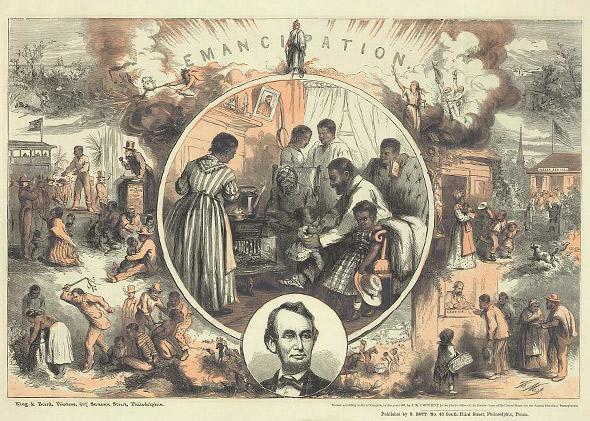
How are indentured servants different from slaves?
Indentured servitude differed from slavery in that it was a form of debt bondage, meaning it was an agreed-upon term of unpaid labor that usually paid off the costs of the servant’s immigration to America. Indentured servants were not paid wages but they were generally housed, clothed, and fed.
When did slavery replace indentured servants?
By 1705, and the passage of “An act concerning Servants and Slaves,” slavery had become ensconced at all levels of Virginia society and was well on its way to completely replacing indentured servitude as the primary source of bound labor in the colony.
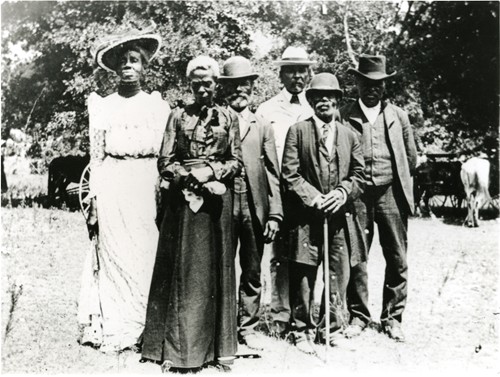
Juneteenth celebration in 1900 in Austin, Texas. Courtesy of the Austin History Center and the Portal to Texas History.
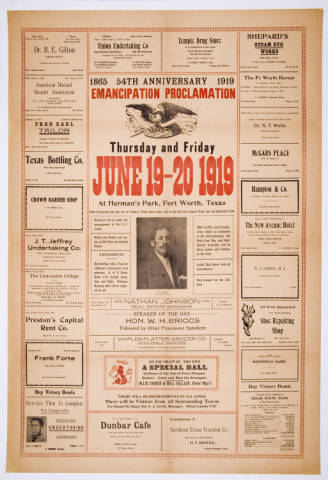
54th Anniversary Emancipation Proclamation
1865–1919
Texas: Photographs, Manuscripts, and Imprints,
DeGolyer Library, Central University Libraries,
Southern Methodist University
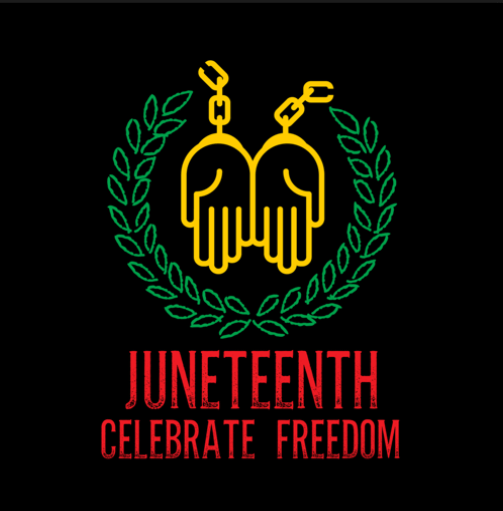
“Juneteenth is the oldest known celebration commemorating the ending of slavery in the United States. Dating back to 1865, it was on June 19th that the Union soldiers, led by Major General Gordon Granger, landed at Galveston, Texas with news that the war had ended and that the enslaved were now free. Note that this was two and a half years after President Lincoln’s Emancipation Proclamation – which had become official January 1, 1863. The Emancipation Proclamation had little impact on the Texans due to the minimal number of Union troops to enforce the new Executive Order. However, with the surrender of General Lee in April of 1865, and the arrival of General Granger’s regiment, the forces were finally strong enough to influence and overcome the resistance.
Later attempts to explain this two and a half year delay in the receipt of this important news have yielded several versions that have been handed down through the years. Often told is the story of a messenger who was murdered on his way to Texas with the news of freedom. Another is that the news was deliberately withheld by the enslavers to maintain the labor force on the plantations. And still, another, is that federal troops actually waited for the slave owners to reap the benefits of one last cotton harvest before going to Texas to enforce the Emancipation Proclamation. All of which or neither of these versions could be true. Certainly, for some, President Lincoln’s authority over the rebellious states was in question For whatever the reasons, conditions in Texas remained status quo well beyond what was statutory.
General Order Number 3
One of General Granger’s first orders of business was to read to the people of Texas, General Order Number 3 which began most significantly with:
“The people of Texas are informed that in accordance with a Proclamation from the Executive of the United States, all slaves are free. This involves an absolute equality of rights and rights of property between former masters and slaves, and the connection heretofore existing between them becomes that between employer and free laborer.”
The reactions to this profound news ranged from pure shock to immediate jubilation. While many lingered to learn of this new employer-to-employee relationship, many left before these offers were completely off the lips of their former ‘masters’ – attesting to the varying conditions on the plantations and the realization of freedom. Even with nowhere to go, many felt that leaving the plantation would be their first grasp of freedom. North was a logical destination and for many, it represented true freedom, while the desire to reach family members in neighboring states drove some into Louisiana, Arkansas, and Oklahoma. Settling into these new areas as free men and women brought on new realities and the challenges of establishing a heretofore non-existent status for Black people in America. Recounting the memories of that great day in June of 1865 and its festivities would serve as motivation as well as a release from the growing pressures encountered in their new territory. The celebration of June 19th was coined “Juneteenth” and grew with more participation from descendants. The Juneteenth celebration was a time for reassuring each other, for praying and for gathering remaining family members. Juneteenth continued to be highly revered in Texas decades later, with many former slaves and descendants making an annual pilgrimage back to Galveston on this date.
Juneteenth Festivities and Food
A range of activities was provided to entertain the masses, many of which continue in tradition today. Rodeos, fishing, barbecuing and baseball are just a few of the typical Juneteenth activities you may witness today. Juneteenth almost always focused on education and self-improvement. Thus, often guest speakers are brought in and the elders are called upon to recount the events of the past. Prayer services were also a major part of these celebrations.
Certain foods became popular and subsequently synonymous with Juneteenth celebrations such as strawberry soda-pop. More traditional and just as popular was the barbecuing, through which Juneteenth participants could share in the spirit and aromas that their ancestors – the newly emancipated African Americans, would have experienced during their ceremonies. Hence, the barbecue pit is often established as the center of attention at Juneteenth celebrations.
Food was abundant because everyone prepared a special dish. Meats such as lamb, pork, and beef which not available every day were brought on this special occasion. A true Juneteenth celebration left visitors well satisfied and with enough conversation to last until the next.
The dress was also an important element in early Juneteenth customs and is often still taken seriously, particularly by the direct descendants who can make the connection to this tradition’s roots. During slavery, there were laws on the books in many areas that prohibited or limited the dressing of the enslaved. During the initial days of the emancipation celebrations, there are accounts of former slaves tossing their ragged garments into the creeks and rivers to adorn clothing taken from the plantations belonging to their former ‘masters’.
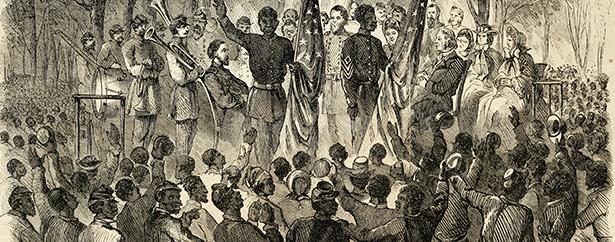
Juneteenth and Society
In the early years, little interest existed outside the African American community in participation in the celebrations. In some cases, there was outwardly exhibited resistance by barring the use of the public property for the festivities. Most of the festivities found themselves out in rural areas around rivers and creeks that could provide for additional activities such as fishing, horseback riding, and barbecues. Often the church grounds was the site for such activities. Eventually, as African Americans became landowners, the land was donated and dedicated to these festivities. One of the earliest documented land purchases in the name of Juneteenth was organized by Rev. Jack Yates. This fund-raising effort yielded $1000 and the purchase of Emancipation Park in Houston, Texas. In Mexia, the local Juneteenth organization purchased Booker T. Washington Park, which had become the Juneteenth celebration site in 1898. There are accounts of Juneteenth activities being interrupted and halted by White landowners demanding that their laborers return to work. However, it seems most allowed their workers the day off and some even made donations of food and money. For decades these annual celebrations flourished, growing continuously with each passing year. In Booker T. Washington Park, as many as 20,000 African Americans once flowed through during the course of a week, making the celebration one of the state’s largest.
Juneteenth Celebrations Decline
Economic and cultural forces provided for a decline in Juneteenth activities and participants beginning in the early 1900s. Classroom and textbook education in lieu of traditional home and family-taught practices stifled the interest of the youth due to less emphasis and detail on the activities of former slaves. Classroom text books proclaimed Lincoln’s Emancipation Proclamation of January 1, 1863, as the date signaling the ending of slavery – and little or nothing on the impact of General Granger’s arrival on June 19th.
The Depression forced many people off the farms and into the cities to find work. In these urban environments, employers were less eager to grant leaves to celebrate this date. Thus, unless June 19th fell on a weekend or holiday, there were very few participants available. July 4th was the already established Independence holiday and a rise in patriotism steered more toward this celebration.
Resurgence
The Civil Rights movement of the ’50s and ’60s yielded both positive and negative results for the Juneteenth celebrations. While it pulled many of the African American youth away and into the struggle for racial equality, many linked these struggles to the historical struggles of their ancestors. This was evidenced by student demonstrators involved in the Atlanta civil rights campaign in the early 1960s, who wore Juneteenth freedom buttons. Again in 1968, Juneteenth received another strong resurgence through Poor Peoples March to Washington D.C.. Rev. Ralph Abernathy’s call for people of all races, creeds, economic levels and professions to come to Washington to show support for the poor. Many of these attendees returned home and initiated Juneteenth celebrations in areas previously absent of such activity. In fact, two of the largest Juneteenth celebrations founded after this March are now held in Milwaukee and Minneapolis.
Texas Blazes the Trail
On January 1, 1980, Juneteenth became an official state holiday through the efforts of Al Edwards, an African American state legislator. The successful passage of this bill marked Juneteenth as the first emancipation celebration granted official state recognition. Edwards has since actively sought to spread the observance of Juneteenth all across America.
Juneteenth In Modern Times
Today, Juneteenth is enjoying a phenomenal growth rate within communities and organizations throughout the country. Institutions such as the Smithsonian, the Henry Ford Museum and others have begun sponsoring Juneteenth-centered activities. In recent years, a number of local and national Juneteenth organizations have arisen to take their place alongside older organizations – all with the mission to promote and cultivate knowledge and appreciation of African American history and culture.
Juneteenth today, celebrates African American freedom and achievement while encouraging continuous self-development and respect for all cultures. As it takes on a more national, symbolic and even global perspective, the events of 1865 in Texas are not forgotten, for all of the roots tie back to this fertile soil from which a national day of pride is growing.
The future of Juneteenth looks bright as the number of cities and states creating Juneteenth committees continues to increase. Respect and appreciation for all of our differences grow out of exposure and working together. Getting involved and supporting Juneteenth celebrations creates new bonds of friendship and understanding among us. This indeed brightens our future – and that is the Spirit of Juneteenth.
History of Juneteenth ©JUNETEENTH.com
NO COPYRIGHT INFRINGEMENT INTENDED
![]()
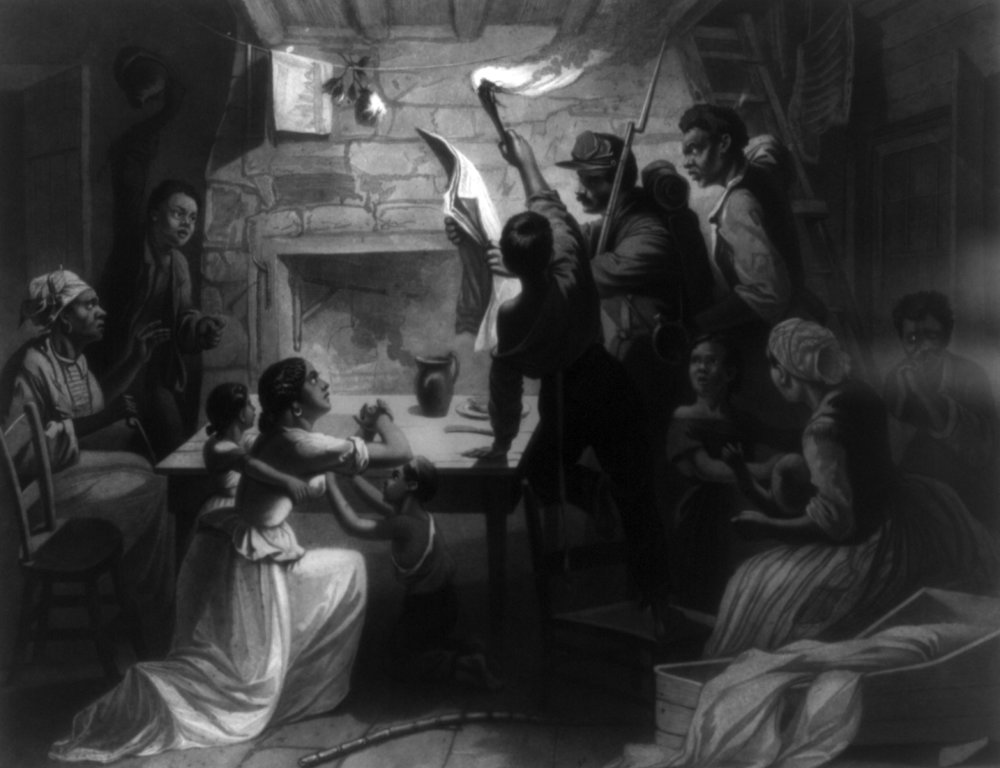
Juneteenth is the oldest known celebration commemorating the ending of slavery in the United States. Dating back to 1865, it was on June 19th that the Union soldiers, led by Major General Gordon Granger, landed at Galveston, Texas with news that the war had ended and that the enslaved were now free. Note that this was two and a half years after President Lincoln’s Emancipation Proclamation – which had become official January 1, 1863.
The Emancipation Proclamation had little impact on the Texans due to the minimal number of Union troops to enforce the new Executive Order. However, with the surrender of General Lee in April of 1865, and the arrival of General Granger’s regiment, the forces were finally strong enough to influence and overcome the resistance. Later attempts to explain this two and a half year delay in the receipt of this important news have yielded several versions that have been handed down through the years.
Often told is the story of a messenger who was murdered on his way to Texas with the news of freedom. Another is that the news was deliberately withheld by the enslavers to maintain the labor force on the plantations. And still, another, is that federal troops actually waited for the slave owners to reap the benefits of one last cotton harvest before going to Texas to enforce the Emancipation Proclamation. All of which or neither of these versions could be true. Certainly, for some, President Lincoln’s authority over the rebellious states was in question For whatever the reasons, conditions in Texas remained status quo well beyond what was statutory.
General Order Number 3 One of General Granger’s first orders of business was to read to the people of Texas, General Order Number 3 which began most significantly with: “The people of Texas are informed that in accordance with a Proclamation from the Executive of the United States, all slaves are free. This involves an absolute equality of rights and rights of property between former masters and slaves, and the connection heretofore existing between them becomes that between employer and free laborer.” The reactions to this profound news ranged from pure shock to immediate jubilation. While many lingered to learn of this new employer-to-employee relationship, many left before these offers were completely off the lips of their former ‘masters’ – attesting to the varying conditions on the plantations and the realization of freedom. Even with nowhere to go, many felt that leaving the plantation would be their first grasp of freedom. North was a logical destination and for many, it represented true freedom, while the desire to reach family members in neighboring states drove some into Louisiana, Arkansas, and Oklahoma.
Settling into these new areas as free men and women brought on new realities and the challenges of establishing a heretofore non-existent status for black people in America. Recounting the memories of that great day in June of 1865 and its festivities would serve as motivation as well as a release from the growing pressures encountered in their new territory.
The celebration of June 19th was coined “Juneteenth” and grew with more participation from descendants. The Juneteenth celebration was a time for reassuring each other, praying, and gathering remaining family members. Juneteenth continued to be highly revered in Texas decades later, with many former slaves and descendants making an annual pilgrimage back to Galveston on this date. Juneteenth Festivities and Food A range of activities were provided to entertain the masses, many of which continue in tradition today. Rodeos, fishing, barbecuing, and baseball is just a few of the typical Juneteenth activities you may witness today. Juneteenth almost always focused on education and self-improvement. Thus, often guest speakers are brought in and the elders are called upon to recount the events of the past.
Prayer services were also a major part of these celebrations. Certain foods became popular and subsequently synonymous with Juneteenth celebrations such as strawberry soda-pop. More traditional and just as popular was the barbecuing, through which Juneteenth participants could share in the spirit and aromas that their ancestors – the newly emancipated African Americans, would have experienced during their ceremonies. Hence, the barbecue pit is often established as the center of attention at Juneteenth celebrations. Food was abundant because everyone prepared a special dish. Meats such as lamb, pork, and beef which not available every day were brought on this special occasion.
A true Juneteenth celebration left visitors well satisfied and with enough conversation to last until the next. The dress was also an important element in early Juneteenth customs and is often still taken seriously, particularly by the direct descendants who can make the connection to this tradition’s roots. During slavery, there were laws on the books in many areas that prohibited or limited the dressing of the enslaved. During the initial days of the emancipation celebrations, there are accounts of former slaves tossing their ragged garments into the creeks and rivers to adorn clothing taken from the plantations belonging to their former ‘masters’. Juneteenth and Society In the early years, little interest existed outside the African American community in participation in the celebrations.
In some cases, there was outwardly exhibited resistance by barring the use of the public property for the festivities. Most of the festivities found themselves out in rural areas around rivers and creeks that could provide for additional activities such as fishing, horseback riding, and barbecues. Often the church grounds were the site for such activities. Eventually, as African Americans became landowners, the land was donated and dedicated to these festivities. One of the earliest documented land purchases in the name of Juneteenth was organized by Rev. Jack Yates.
This fund-raising effort yielded $1000 and the purchase of Emancipation Park in Houston, Texas. In Mexia, the local Juneteenth organization purchased Booker T. Washington Park, which had become the Juneteenth celebration site in 1898. There are accounts of Juneteenth activities being interrupted and halted by White landowners demanding that their laborers return to work.
However, it seems most allowed their workers the day off and some even made donations of food and money. For decades these annual celebrations flourished, growing continuously with each passing year.
In Booker T. Washington Park, as many as 20,000 African Americans once flowed through during the course of a week, making the celebration one of the state’s largest. Juneteenth Celebrations Decline Economic and cultural forces provided for a decline in Juneteenth activities and participants beginning in the early 1900s.
Classroom and textbook education in lieu of traditional home and family-taught practices stifled the interest of the youth due to less emphasis and detail on the activities of former slaves. Classroom text books proclaimed Lincoln’s Emancipation Proclamation of January 1, 1863, as the date signaling the ending of slavery – and little or nothing on the impact of General Granger’s arrival on June 19th.
The Depression forced many people off the farms and into the cities to find work. In these urban environments, employers were less eager to grant leaves to celebrate this date. Thus, unless June 19th fell on a weekend or holiday, there were very few participants available. July 4th was the already established Independence holiday and a rise in patriotism steered more toward this celebration. Resurgence The Civil Rights movement of the ’50s and ’60s yielded both positive and negative results for the Juneteenth celebrations.
While it pulled many of the African American youth away and into the struggle for racial equality, many linked these struggles to the historical struggles of their ancestors. This was evidenced by student demonstrators involved in the Atlanta civil rights campaign in the early 1960s, who wore Juneteenth freedom buttons. Again in 1968, Juneteenth received another strong resurgence through the Poor Peoples March to Washington D.C.. Rev. Ralph Abernathy’s call for people of all races, creeds, economic levels, and professions to come to Washington to show support for the poor. Many of these attendees returned home and initiated Juneteenth celebrations in areas previously absent of such activity. In fact, two of the largest Juneteenth celebrations founded after this March are now held in Milwaukee and Minneapolis. Texas Blazes the Trail On January 1, 1980, Juneteenth became an official state holiday through the efforts of Al Edwards, an African American state legislator.
The successful passage of this bill marked Juneteenth as the first emancipation celebration granted official state recognition. Edwards has since actively sought to spread the observance of Juneteenth all across America. Juneteenth In Modern Times Today, Juneteenth is enjoying a phenomenal growth rate within communities and organizations throughout the country. Institutions such as the Smithsonian, the Henry Ford Museum, and others have begun sponsoring Juneteenth-centered activities. In recent years, a number of local and national Juneteenth organizations have arisen to take their place alongside older organizations – all with the mission to promote and cultivate knowledge and appreciation of African American history and culture. Juneteenth today, celebrates African American freedom and achievement while encouraging continuous self-development and respect for all cultures.
As it takes on a more national, symbolic, and even global perspective, the events of 1865 in Texas are not forgotten, for all of the roots tie back to this fertile soil from which a national day of pride is growing. The future of Juneteenth looks bright as the number of cities and states creating Juneteenth committees continues to increase. Respect and appreciation for all of our differences grow out of exposure and working together. Getting involved and supporting Juneteenth celebrations creates new bonds of friendship and understanding among us. This indeed brightens our future – and that is the Spirit of Juneteenth. History of Juneteenth ©JUNETEENTH.com divider.gif
ONE MORE TIME
James Ingram

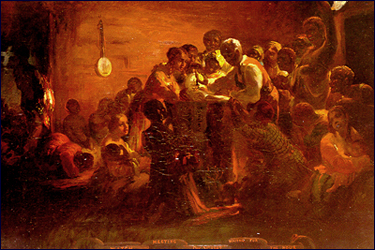
In the halls of the West Wing, you can find a painting by William Carlton. Watch Meeting-Dec. 31st 1862-Waiting for the Hour was handpicked by President Obama to hang just outside of the Oval Office. The painting depicts a group of enslaved African Americans watching the clock, waiting for the hour of their freedom.
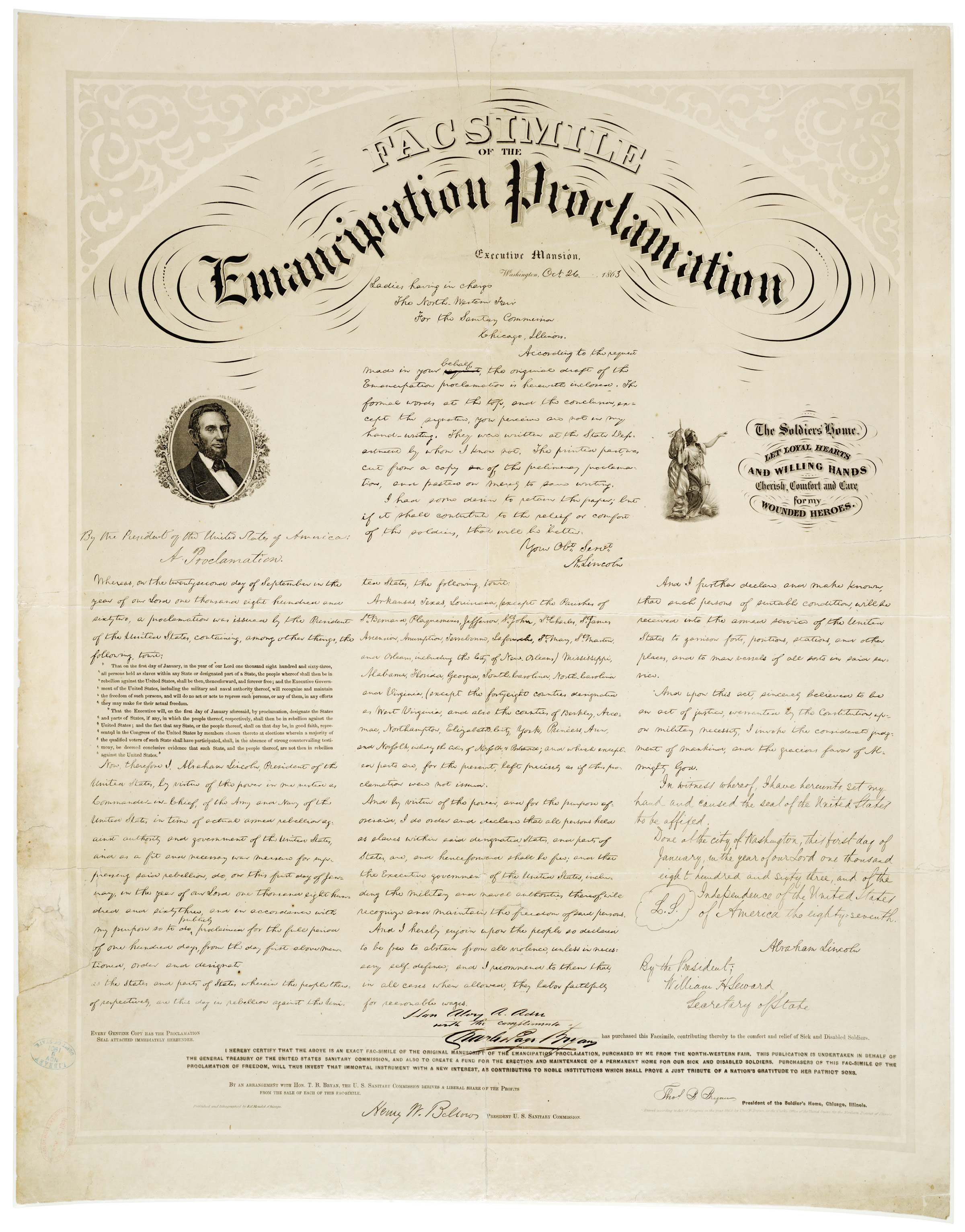
Emancipation Proclamation (Soldier’s Home Facsimile Edition)
1863
Dimensions: 32 7/8″ [width], 25 1/4″ [depth]
Record Group 59
General Records of the Department of State
Rediscovery # 00315
00315_2008_001
Why does Juneteenth matter?
“Juneteenth represents the good and the bad in what makes the United States the country it is: It’s symbolic of liberation, but one that was delayed due to consistent opposition and resistance to equality that is deeply rooted in white supremacy — something that all too often feels very American.
Those last American slaves were declared free months after they had actually been freed, and still, freedom wasn’t granted overnight. Some slave owners withheld this information from their slaves until after harvest season, delaying freedom even further.
Even now, the idea of delayed freedom resonates. What is freedom when you’re seen and treated as subhuman? From the original Juneteenth to 2019’s Juneteenth, black people have endured a continuous fight for equality and a different kind of freedom.
“Today’s political climate is the result of a concerted effort over many years to teach individuals a revised history: that the system of slavery was related to state’s rights, when in fact it was a treasonous act that this nation must not revisit. One of the ways we can prevent another uprising of a treasonous act [like slavery] is to recognize milestones like Juneteenth,” president of the NAACP, Derrick Johnson, tells Teen Vogue. “I think the significance and purpose of recognizing Juneteenth is something that all citizens should acknowledge because, if there is not a retelling or remembrance of the true history in this nation, we’re doomed to repeat it.”
In a country that prides itself on being the “land of the free,” this is just one of our many national contradictions and hypocrisies, another one of which is, notably, right around the corner: The 4th of July. It’s a day meant to celebrate when America declared independence from the British in 1776 and is referred to as “Independence Day,” despite the fact that black Americans weren’t even considered to be people at that time.
“This Fourth July is yours, not mine. You may rejoice, I must mourn,” said Frederick Douglass on July 5, 1852, during an event commemorating the signing of the Declaration of Independence. “I am not included within the pale of glorious anniversary! Your high independence only reveals the immeasurable distance between us. The blessings in which you, this day, rejoice, are not enjoyed in common. The rich inheritance of justice, liberty, prosperity, and independence, bequeathed by your fathers, is shared by you, not by me.”
As Douglass expertly laid out, that day of “independence” does not mark liberation for all. What Juneteenth symbolizes, by contrast, is a true day of freedom. That’s something worth celebrating, and continuing to fight for — not just among black folks, but among everyone.”
Iforcolor.org 2019
NO COPYRIGHT INFRINGEMENT INTENDED
